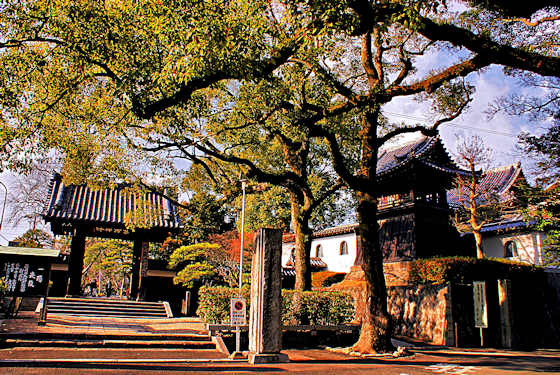Saturday, September 25, 2021
Bairinji Zen Temple
Wednesday, September 22, 2021
A Long and Delightful Day 51 on the Kyushu Pilgrimage
However, the highlight of the day was a visit to something I could see not long after visiting the first temple, but which still took a couple of hours to reach...... The Kurume area is not a well known tourist destination, but I hope you will join me over the next week or two as I post photos of some of the surprising delights I found....
Monday, September 20, 2021
Flowers of Taketomi Island
Taketomi 竹富島
Saturday, September 18, 2021
Koinoki Shrine the Love Shrine in Fukuoka
Koinoki Shrine
I can find no information about the kami Koinoki no mikoto. I strongly suspect that it was simply the name for a local kami and because of the idiosyncrasies of the Japanese language the Chinese character representing"koi" was changed to the one that reads as "love". This kind of redefining of words is fairly common, perhaps the most well-known example being "Karate". Originally kara was written using the character meaning China, but this was rewritten by the Meiji government to the character for "empty hand", thereby obscuring the Chinese origin of the martial art.
This was my final stop on my 50th day walking the Kyushu Pilgrimage that had started out in the fog further south in Arao, Kumamoto. On my way north I stopped in at shrines before reaching one of the pilgrimage temples. I had a wonderful time exploring the nearby Kyushu Geibunkan and its' annexes before reaching Mizuta Tenmangu.
Thursday, September 16, 2021
Nakane Samurai Residence & Garden in Kitsuki
Nakane Samurai Residence
Labels:
garden,
kitsuki,
kunisaki fall,
samurai,
thatched
Sunday, September 12, 2021
Many Komainu at Mizuta Tenmangu
Friday, September 10, 2021
Morikawa Residence Garden in Takehara
Morikawa Residence Garden
Wednesday, September 8, 2021
Mizuta Tenmangu
Mizuta Tenmangu
Subscribe to:
Posts (Atom)


































































